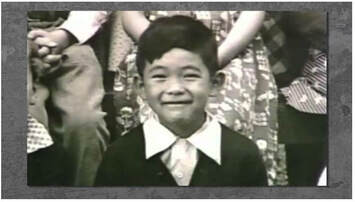nglish/Language Arts
Expanding Your Vocabulary:
Toward the end of her Nonfiction Minute, the author uses several words you may not know to help explain how the US government was held accountable for its unjust internment of Japanese Americans. In simple terms, what do these words mean? Use each correctly in a sentence:
Restitution
Exonerated
Egregious
Social Studies
Once you understand the word “restitution,” do some research to find out if there are other groups in America who feel that they too should receive restitution from the government. Would you agree that they have been wrongly oppressed? If it were in your power, would you grant them restitution? If so, would it take any form other than financial?
Dig into American history in the months following Pearl Harbor. What were some of the things being said about Japanese Americans in the press and by politicians to stir up prejudice against them to justify sending them to internment camps? Can you think of examples of how certain groups are currently being targeted as unpatriotic or dangerous to society in our country or other countries?
STEM
All ten of the permanent internment camps were similar, and yet each was unique because of its location. Read about the ten camps. How was each unique? What challenges did each pose for internees in terms of geography and weather?
Research Skills
Young men in the camps faced a dilemma regarding the draft and serving their country in the military. Most were very patriotic, but some questioned fighting for a government that was holding their families prisoner. Two groups you will find especially interesting were the No-No Boys and the 442nd Regimental Combat Team. Do research on both of them and discuss how you feel about each of them.
To help you get started:
densho.org is dedicated to preserving the history of Japanese American incarceration. You will find a wealth of information on this site.
The National Park Service maintains information about the camps at nps.org.
The Smithsonian Institution website (smithsonian.org) has much to offer if you put “Japanese Americans” in the search box.
Andrea Warren’s book Enemy Child: The Story of Norman Mineta, a Boy Imprisoned in a Japanese American Internment Camp During World War II, published by Holiday House, is also an excellent source of information about Norman Mineta and the Japanese American experience.
Expanding Your Vocabulary:
Toward the end of her Nonfiction Minute, the author uses several words you may not know to help explain how the US government was held accountable for its unjust internment of Japanese Americans. In simple terms, what do these words mean? Use each correctly in a sentence:
Restitution
Exonerated
Egregious
Social Studies
Once you understand the word “restitution,” do some research to find out if there are other groups in America who feel that they too should receive restitution from the government. Would you agree that they have been wrongly oppressed? If it were in your power, would you grant them restitution? If so, would it take any form other than financial?
Dig into American history in the months following Pearl Harbor. What were some of the things being said about Japanese Americans in the press and by politicians to stir up prejudice against them to justify sending them to internment camps? Can you think of examples of how certain groups are currently being targeted as unpatriotic or dangerous to society in our country or other countries?
STEM
All ten of the permanent internment camps were similar, and yet each was unique because of its location. Read about the ten camps. How was each unique? What challenges did each pose for internees in terms of geography and weather?
Research Skills
Young men in the camps faced a dilemma regarding the draft and serving their country in the military. Most were very patriotic, but some questioned fighting for a government that was holding their families prisoner. Two groups you will find especially interesting were the No-No Boys and the 442nd Regimental Combat Team. Do research on both of them and discuss how you feel about each of them.
To help you get started:
densho.org is dedicated to preserving the history of Japanese American incarceration. You will find a wealth of information on this site.
The National Park Service maintains information about the camps at nps.org.
The Smithsonian Institution website (smithsonian.org) has much to offer if you put “Japanese Americans” in the search box.
Andrea Warren’s book Enemy Child: The Story of Norman Mineta, a Boy Imprisoned in a Japanese American Internment Camp During World War II, published by Holiday House, is also an excellent source of information about Norman Mineta and the Japanese American experience.
© Andrea Warren 2020 -may be educational purposes without written permission



